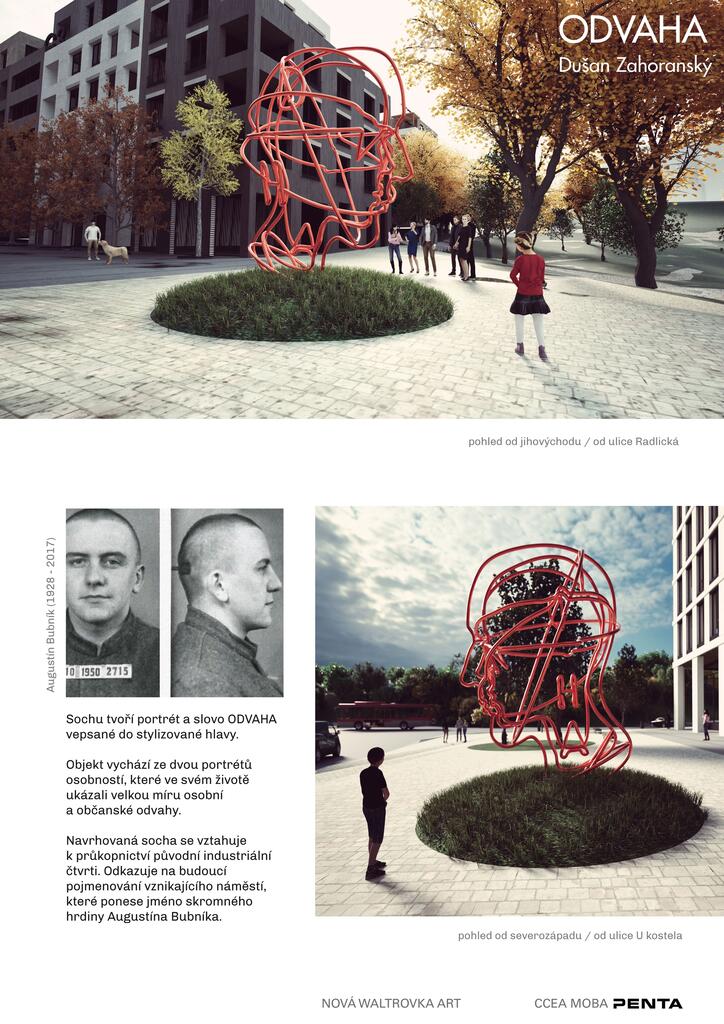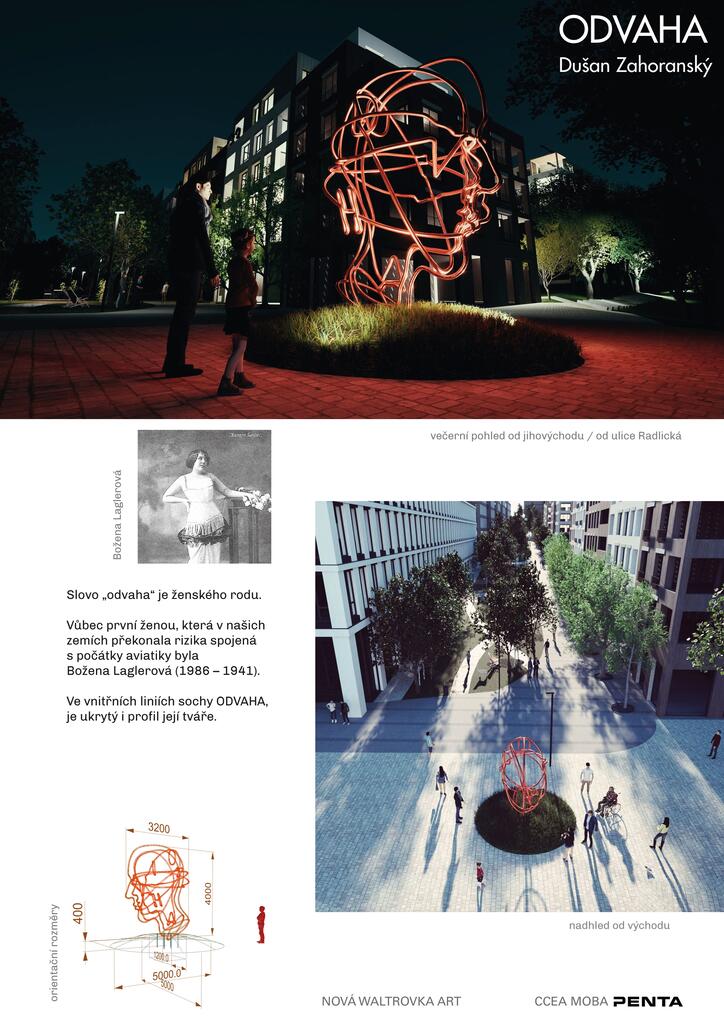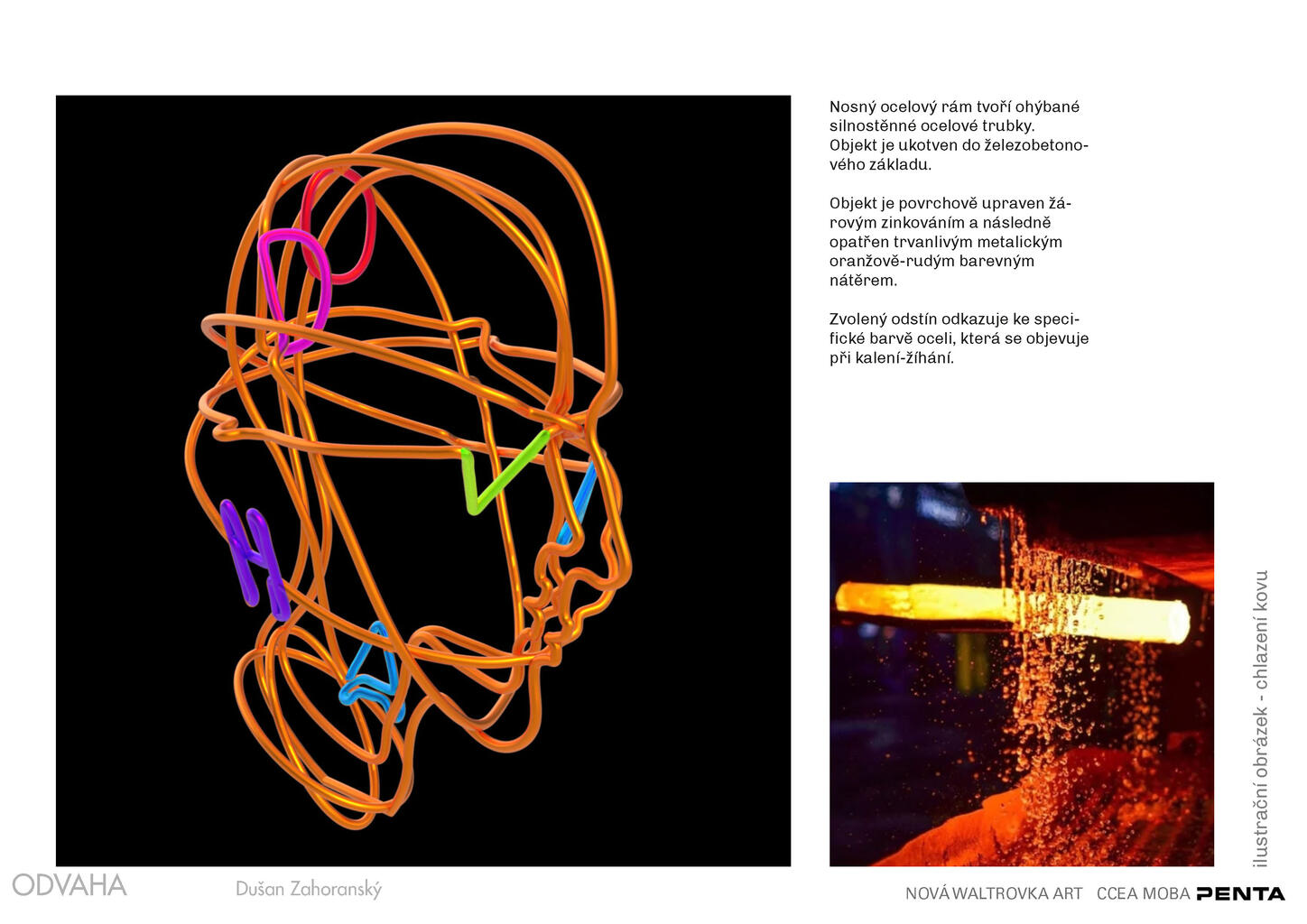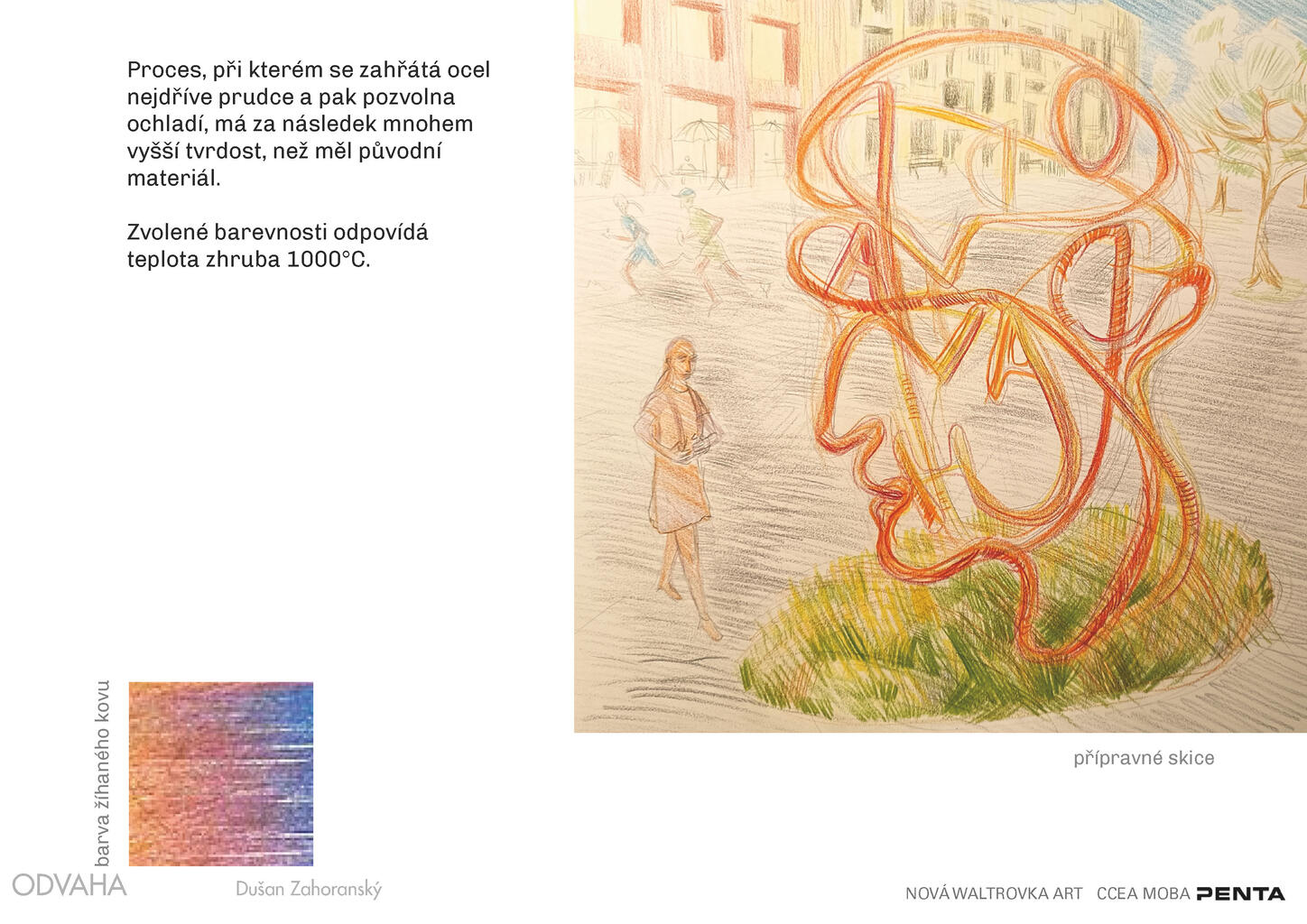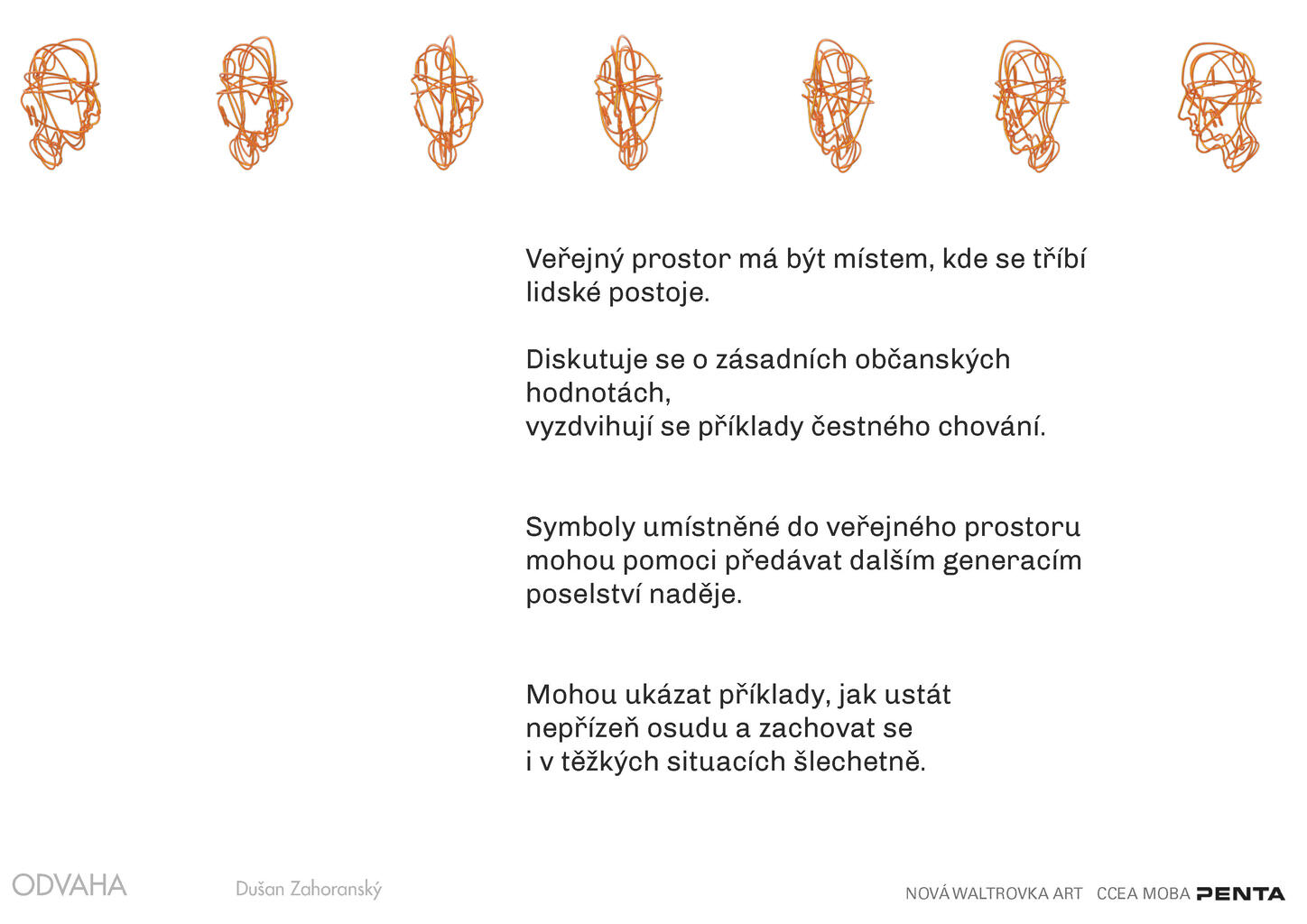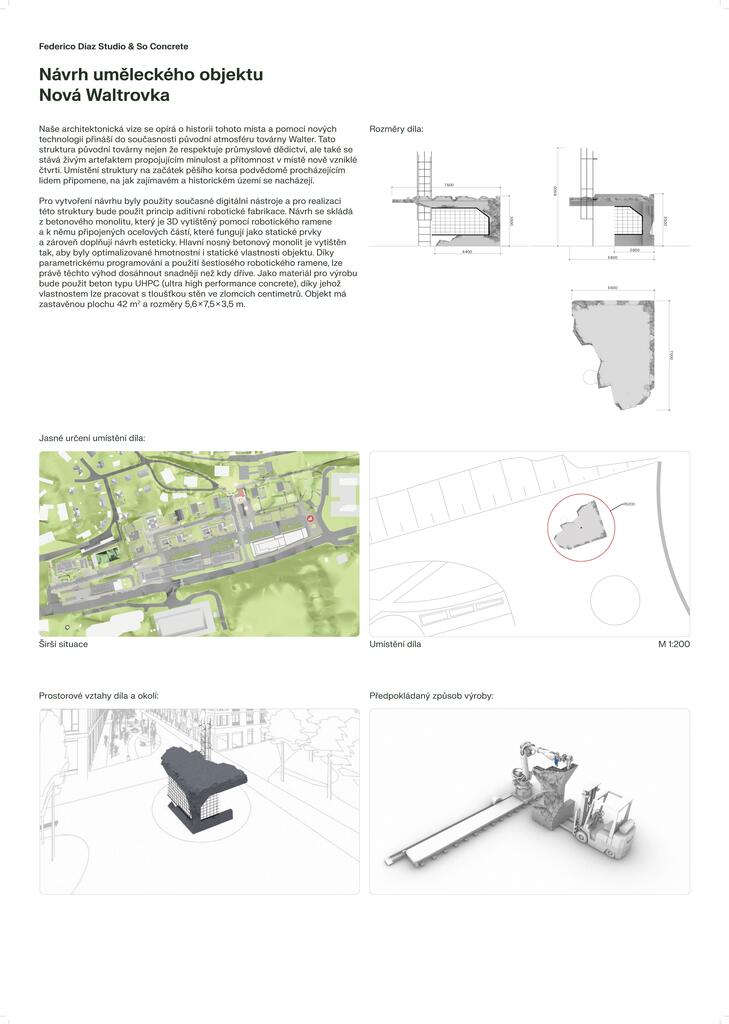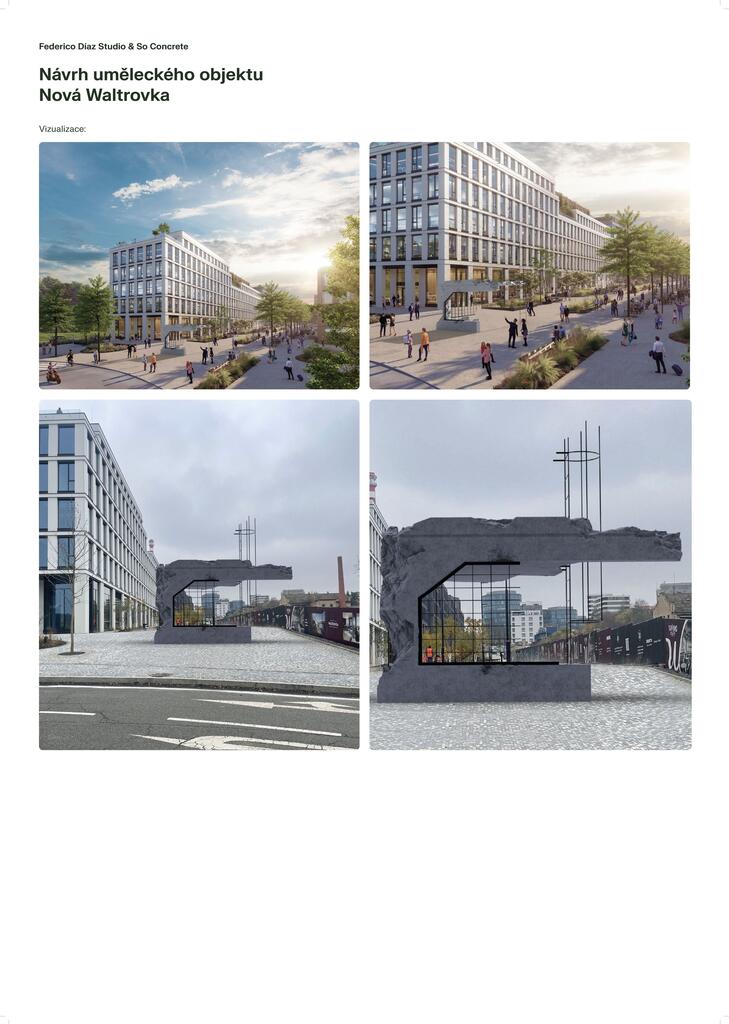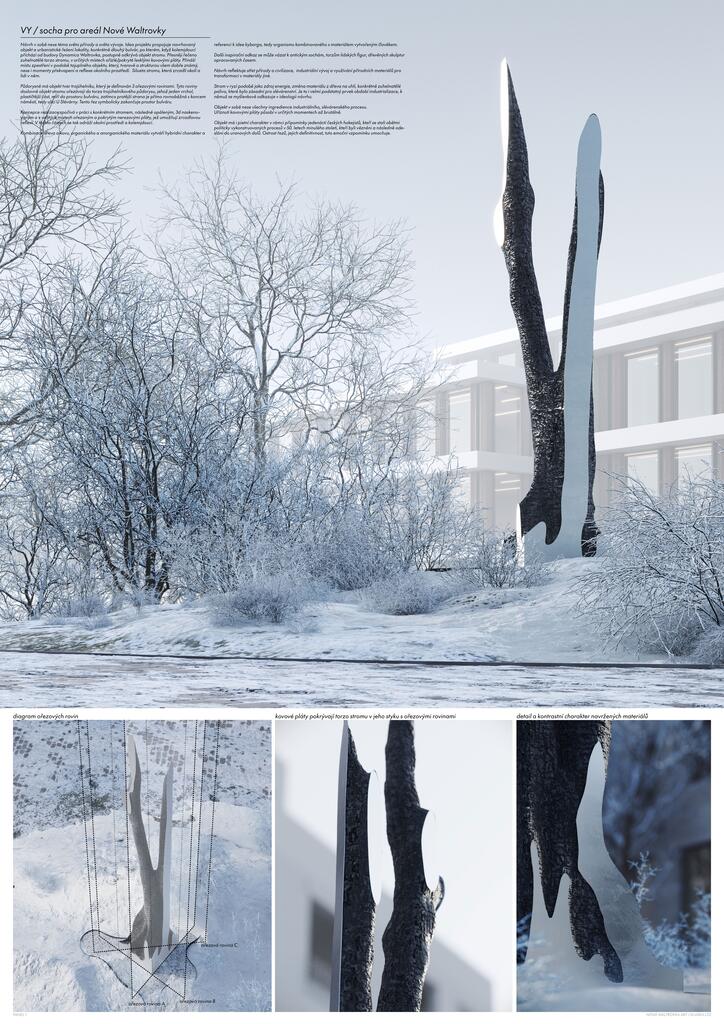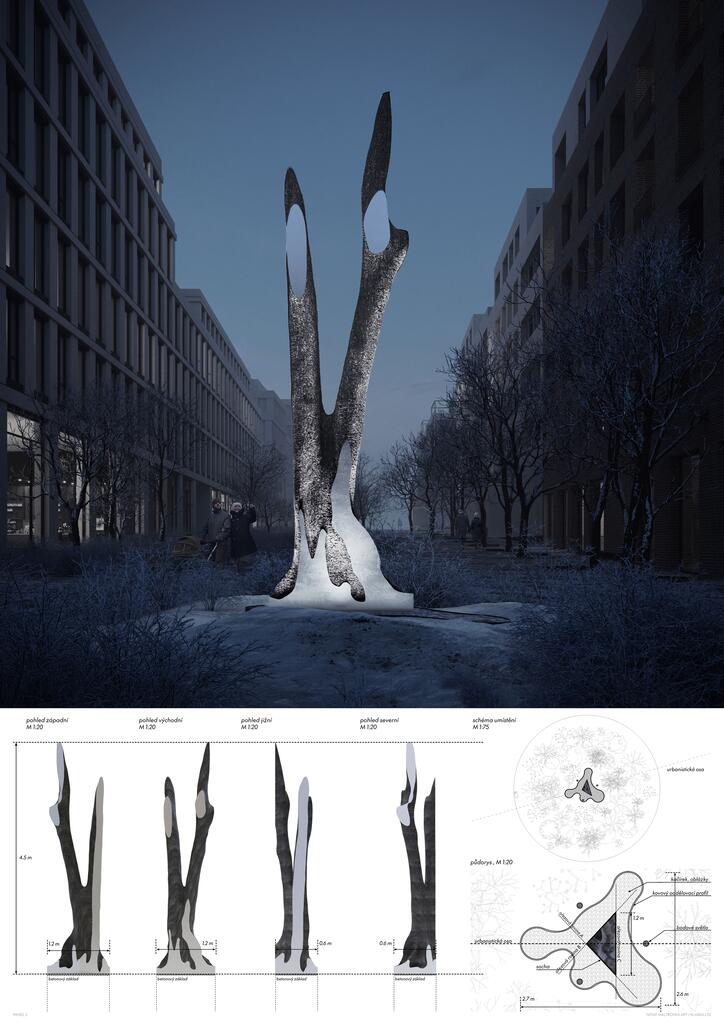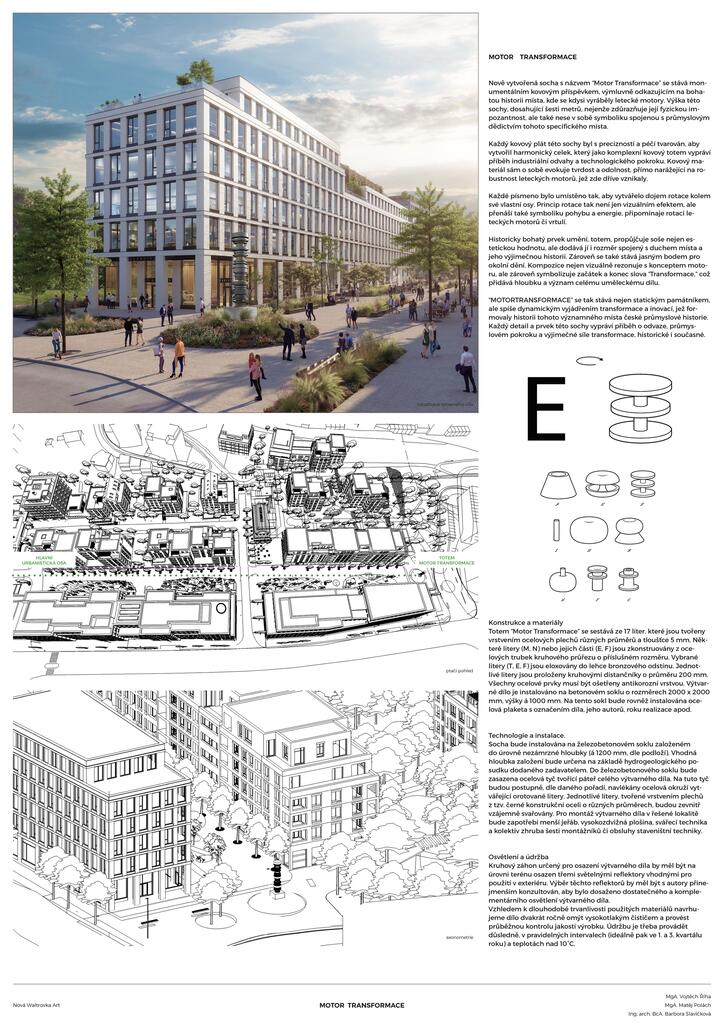- Author Dušan Zahoranský
- Prague
The sculpture consists of a portrait and the word "COURAGE" inscribed within a stylized head. It is based on two portraits of individuals who demonstrated great personal and civic courage in their lives. The proposed sculpture relates to the pioneering spirit of the original industrial district. It refers to the future naming of the emerging square, which will bear the name of the humble hero Augustín Bubník. Augustín Bubník spent nearly five years in prison and labor camps. After his release, he returned to sports—between 1966 and 1969, he even led the Finnish national hockey team. Young men and women who had survived the war could finally breathe freely and showcase their talents. However, the brutal political regime of the 1950s cracked down harshly on a group of free-thinking young athletes. They only wanted to test their skills at the Ice Hockey World Championship. This senseless persecution interrupted their careers but did not destroy their friendships. The perseverance with which they faced adversity remains a testament to their belief in human freedom. From it, we can draw COURAGE for our journeys. Augustín Bubník was one of those who, after enduring torture and imprisonment, managed to rise again and return to what he did best—inspiring passion for sport and fair play. Another inspiration behind the COURAGE sculpture is a different example of human bravery. While researching the history of the industrial zone between today’s Jinonice and Radlice neighborhoods, I realized how courageous the first attempts at flight were. A young Prague-born woman, Božena Laglerová, with the support of those close to her, completed flight training and, starting around 1911, flew regularly. She survived a serious injury that left lasting damage to her health, yet she never gave up flying or promoting aviation throughout her relatively short but intense life. These two figures, each from a different background, grew up in pre-war Prague. In my sculpture, they symbolically meet, connected by the word "courage."
